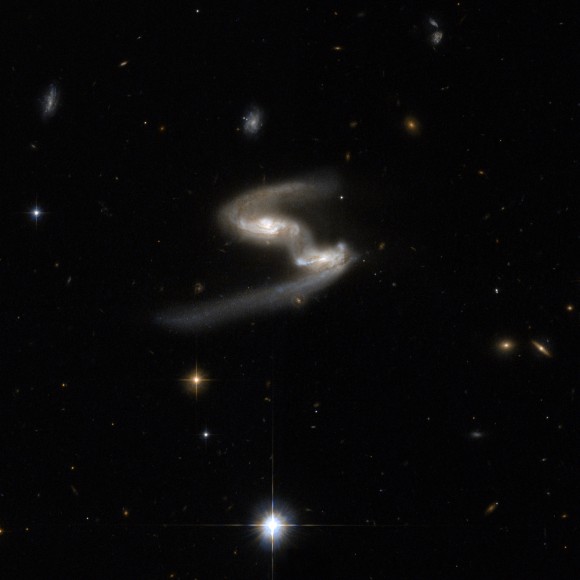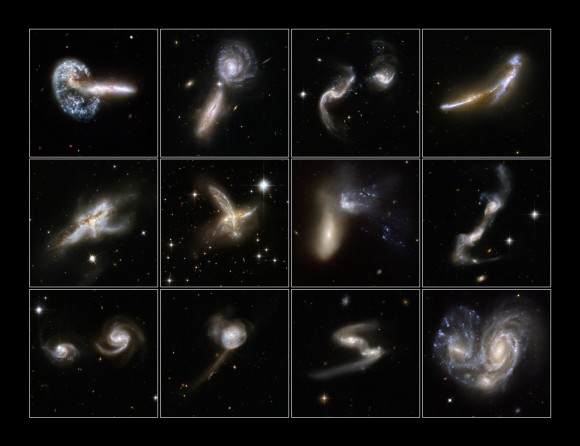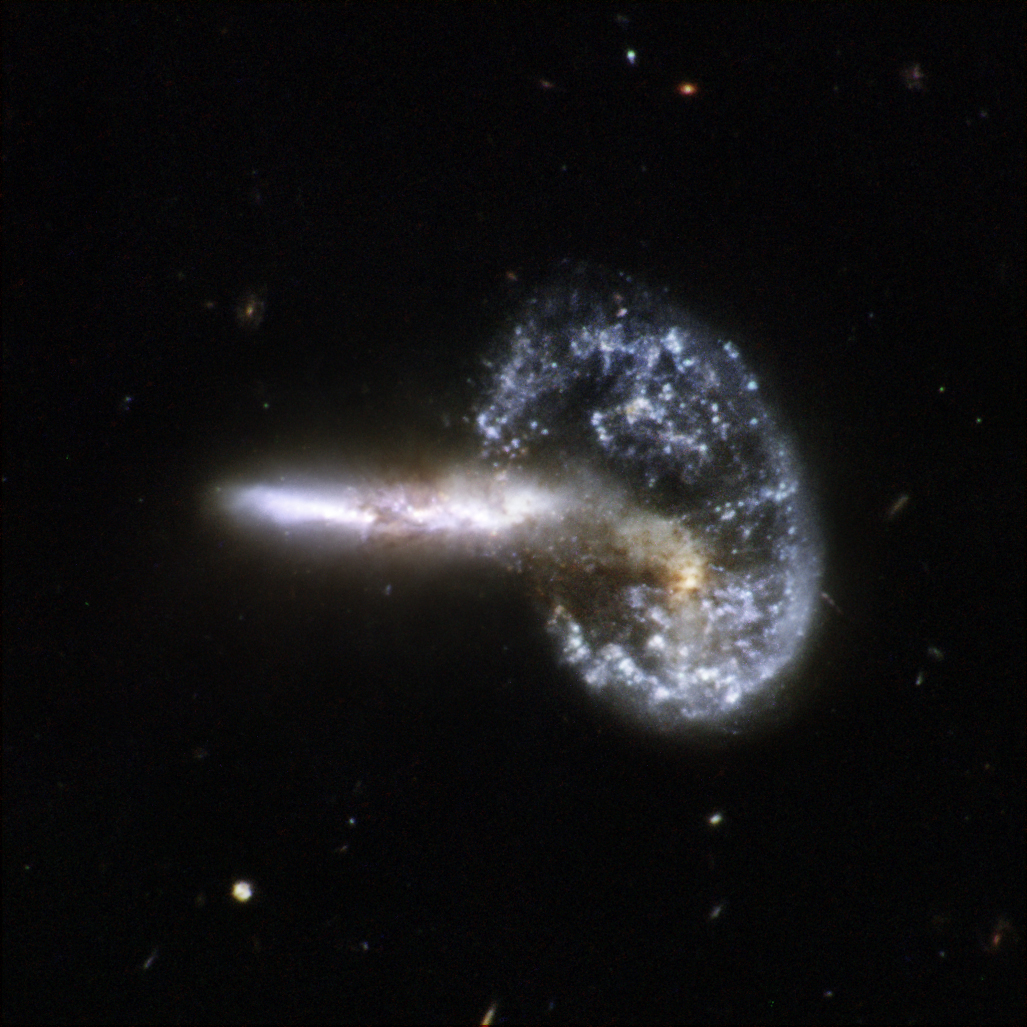59 new images from the Hubble Space Telescope show some very unusual but incredibly spectacular colliding galaxies. Colliding or interacting galaxies are found throughout the Universe, and sometimes these collisions trigger bursts of star formation, or the mergers form new galaxies. The image above shows the aftermath of an encounter between two galaxies, resulting in a ring-shaped galaxy and a long-tailed companion. Officially called Arp 148, it also has the nickname ‘Mayall’s object.’ It is located in the constellation of Ursa Major, the Great Bear, approximately 500 million light-years away. These images are the largest collection from Hubble ever published simultaneously, and they celebrate the 18th anniversary of Hubble’s launch. And there’s more….

This is a stunning snapshot of a celestial dance performed by a pair of similar sized galaxies. ESO 77-14 is in the constellation of Indus, the Indian, some 550 million light-years away from Earth. The galaxy on the right has a long, bluish arm while its companion has a shorter, redder arm.

The Hubble Site has a video about colliding galaxies.
For the entire collection of these images see the Hubble site.
Original News Source: ESA press release


Beautiful photo !!
If we were near the center of our galaxy what would our sky look like at night and during the day. How far apart would the stars be? and would they be small hot stars or large cool ones or mixed. I cannot picture if night would be almost as bright as day or would there be no change from what we see now.
The way to determine that would be to figure out how far apart 3 stars in the same arm would be and then compare to the brightness of similar star on earth. Being that our closest star on earth is quite a ways away. I don’t think we could imagine another star being as close as they are toward the black hole in the center. Though at the center of the galaxy you sure would be looking at it a long time considering the temporal slow down there.
These images are absolutely spectacula! I hope Mayall’s Object makes the 2009 Astronomy calendar.
Can you see it in an 8″ Schmidt-Cassegrain?
Seems to me God has a great artistic eye and a grim, yet cheeky sense of humor. I look forward to more beauties like these.
Has any other mission changed our view of the universe as well as brought as much beauty to us all as Hubble?
cute little galaxies, A ha?
to the first one… “SHOOP DA WHOOP!!!”
Beautiful photos. What do they say about the Big Bang which tells us that “all” galaxies are receding from each other? How many more, that haven’t as yet been discovered, are actually colliding?
There is nothing more beutiful then sky!!!!!!!!!!
There is nothing more beautiful than sky!!!!!!!!!!
WHEN GOD MADE THIS UNIVERSE HE WOULOD NOT WASTE SPACE. LIFE IS OUT THERE IN THE UNIVERSE